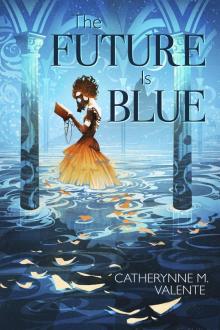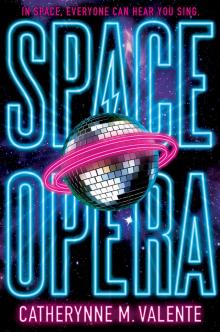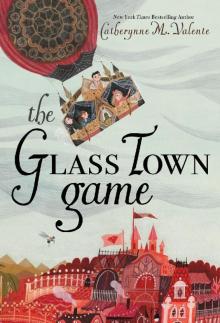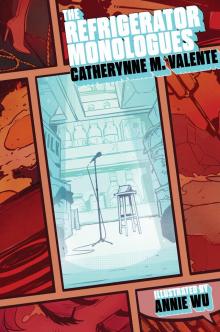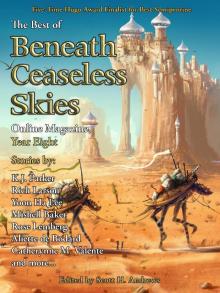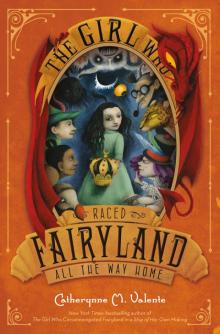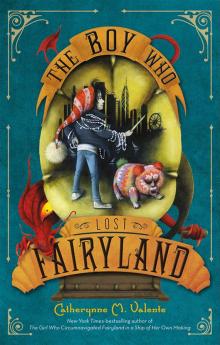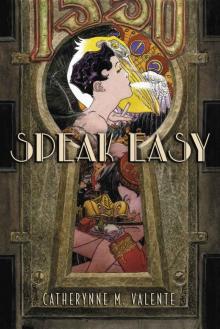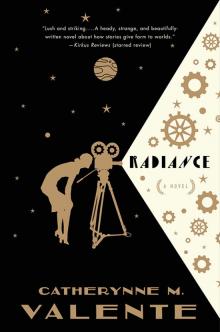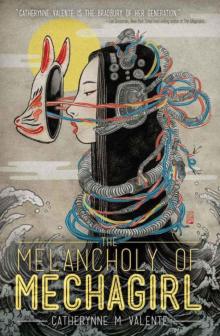


The Gernsback Continuum
William Gibson
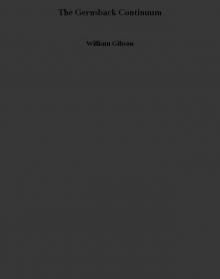
The Gernsback Continuum
William Gibson
William Gibson
The Gernsback Continuum
Mercifully, the whole thing is starting to fade, to become an episode. When I do still catch the odd glimpse, it's peripheral; mere fragments of mad-doctor chrome, confining themselves to the corner of the eye. There was that flying-wing liner over San Francisco last week, but it was almost translucent. And the shark-fin roadsters have gotten scarcer, and freeways discreetly avoid unfolding themselves into the gleaming eighty lane monsters I was forced to drive last month in my rented Toyota. And I know that none of it will follow me to New York; my vision is narrowing to a single wavelength of probability. I've worked hard for that. Television helped a lot. I suppose it started in London, in that bogus Greek taverna in Battersea Park Road, with lunch on Cohen's corporate tab. Dead steam-table food and it took them thirty minutes to find an ice bucket for the retsina. Cohen works for Barris-Watford, who publish big, trendy "trade" paperbacks: illustrated histories of the neon sign, the pinball machine, the windup toys of Occupied Japan. I'd gone over to shoot a series of shoe ads; California girls with tanned legs and frisky DayGb jogging shoes had capered for me down the escalators of St. John's Wood and across the platforms of Tooting Bec. A lean and hungry young agency had decided that the mystery of London Transport would sell waffle-tread nylon runners. They decide; I shoot. And Cohen, whom I knew vaguely from the old days in New York, had invited me to lunch the day before I was due out of Heathrow. He brought along a very fashionably dressed young woman named Dialta Downes, who was virtually chinless and evidently a noted pop-art historian. In retrospect, I see her walking in beside Cohen under a floating neon sign that flashes THIS WAY LIES MADNESS in huge sans-serif capitals.
Cohen introduced us and explained that Dialta was the prime mover behind the latest Barris-Watford project, an illustrated history of what she called "American Streamlined Moderne." Cohen called it "raygun Gothic." Their working title was The Airstream Futuropolis: The Tomorrow That Never Was.
There's a British obsession with the more baroque elements of American pop culture, something like the weird cowboys-and-Indians fetish of the West Germans or the aberrant French hunger for old Jerry Lewis films. In Dialta Downes this manifested itself in a mania for a uniquely American form of architecture that most Americans are scarcely aware of. At first I wasn't sure what she was talking about, but gradually it began to dawn on me. I found myself remembering Sunday morning television in the Fifties.
Sometimes they'd run old eroded newsreels as filler on the local station. You'd sit there with a peanut butter sandwich and a glass of milk, and a static-ridden Hollywood baritone would tell you that there was A Flying Car in Your Future. And three Detroit engineers would putter around with this big old Nash with wings, and you'd see it rumbling furiously down some deserted Michigan runway. You never actually saw it take off, but it flew away to Dialta Downes's never-never land, true home of a generation of completely uninhibited technophiles. She was talking about those odds and ends of "futuristic" Thirties and Forties architecture you pass daily in American cities without noticing; the movie marquees ribbed to radiate some mysterious energy, the dime stores faced with fluted aluminum, the chrome-tube chairs gathering dust in the lobbies of transient hotels. She saw these things as segments of a dreamworld, abandoned in the uncaring present; she wanted me to photograph them for her.
The Thirties had seen the first generation of American industrial designers; until the Thirties, all pencil sharpeners had looked like pencil sharpeners your basic Victorian mechanism, perhaps with a curlicue of decorative trim. After the advent of the designers, some pencil sharpeners looked as though they'd been put together in wind tunnels. For the most part, the change was only skin-deep; under the streamlined chrome shell, you'd find the same Victorian mechanism. Which made a certain kind of sense, because the most successful American designers had been recruited from the ranks of Broadway theater designers. It was all a stage set, a series of elaborate props for playing at living in the future.
Over coffee, Cohen produced a fat manila envelope full of glossies. I saw the winged statues that guard the Hoover Dam, forty-foot concrete hood ornaments leaning steadfastly into an imaginary hurricane. I saw a dozen shots of Frank Lloyd Wright's Johnson's Wax Building, juxtaposed with the covers of old Amazing Stories pulps, by an artist named Frank R. Paul; the employees of Johnson's Wax must have felt as though they were walking into one of Paul's spray-paint pulp utopias. Wright's building looked as though it had been designed for people who wore white togas and Lucite sandals. I hesitated over one sketch of a particularly grandiose prop-driven airliner, all wing, like a fat symmetrical boomerang with windows in unlikely places. Labeled arrows indicated the locations of the grand ballroom and two squash courts. It was dated 1936.
"This thing couldn't have flown... ?" I looked at Dialta Downes.
"Oh, no, quite impossible, even with those twelve giant props; but they loved the look, don't you see? New York to London in less than two days, first-class dining rooms, private cabins, sun decks, dancing to jazz in the evening... The designers were populists, you see; they were trying to give the public what it wanted. What the public wanted was the future."
I'd been in Burbank for three days, trying to suffuse a really dull-looking rocker with charisma, when I got the package from Cohen. It is possible to photograph what isn't there; it's damned hard to do, and consequently a very marketable talent. While I'm not bad at it, I'm not exactly the best, either, and this poor guy strained my Nikon's credibility. I got out, depressed because I do like to do a good job, but not totally depressed, because I did make sure I'd gotten the check for the job, and I decided to restore myself with the sublime artiness of the Barris-Watford assignment. Cohen had sent me some books on Thirties design, more photos of streamlined buildings, and a list of Dialta Downes's fifty favorite examples of the style in California.
Architectural photography can involve a lot of waiting; the building becomes a kind of sundial, while you wait for a shadow to crawl away from a detail you want, or for the mass and balance of the structure to reveal itself in a certain way. While I was waiting, I thought myself in Dialta Downes's America. When I isolated a few of the factory buildings on the ground glass of the Hasselblad, they came across with a kind of sinister totalitarian dignity, like the stadiums Albert Speer built for Hitler. But the rest of it was relentlessly tacky: ephemeral stuff extruded by the collective American subconscious of the Thirties, tending mostly to survive along depressing strips lined with dusty motels, mattress wholesalers, and small used-car lots. I went for the gas stations in a big way.
During the high point of the Downes Age, they put Ming the Merciless in charge of designing California gas stations. Favoring the architecture of his native Mongo, he cruised up and down the coast erecting raygun emplacements in white stucco. Lots of them featured superfluous central towers ringed with those strange radiator flanges that were a signature motif of the style, and made them look as though they might generate potent bursts of raw technological enthusiasm, if you could only find the switch that turned them on. I shot one in San Jose an hour before the bulldozers arrived and drove right through the structural truth of plaster and lathing and cheap concrete.
"Think of it," Dialta Downes had said, "as a kind of alternate America: a 1980 that never happened. An architecture of broken dreams."
And that was my frame of mind as I made the stations of her convoluted socioarchitectural cross in my red Toyota as I gradually tuned in to her image of a shadowy America-that-wasn't, of Coca-Cola plants like beached submarines, and fifth-run movie houses like the temples of some lost sect that had worshiped blue mirrors and
geometry. And as I moved among these secret ruins, I found myself wondering what the inhabitants of that lost future would think of the world I lived in. The Thirties dreamed white marble and slipstream chrome, immortal crystal and burnished bronze, but the rockets on the covers of the Gernsback pulps had fallen on London in the dead of night, screaming. After the war, everyone had a car no wings for it and the promised superhighway to drive it down, so that the sky itself darkened, and the fumes ate the marble and pitted the miracle crystal...
And one day, on the outskirts of Bolinas, when I was setting up to shoot a particularly lavish example of Ming's martial architecture, I penetrated a fine membrane, a membrane of probability... Every so gently, I went over the Edge And looked up to see a twelve-engined thing like a bloated boomerang, all wing, thrumming its way east with an elephantine grace, so low that I could count the rivets in its dull silver skin, and hear maybe the echo of jazz.
I took it to Kihn. Merv Kihn, free-lance journalist with an extensive line in Texas pterodactyls, redneck UFO contactees, bush-league Loch Ness monsters, and the Top Ten conspiracy theories in the loonier reaches of the American mass mind.
"It's good," said Kihn, polishing his yellow Polaroid shooting glasses on the hem of his Hawaiian shirt, "but it's not mental; lacks the true quill."
But I saw it, Mervyn." We were seated poolside in brilliant Arizona sunlight. He was in Tucson waiting for a group of retired Las Vegas civil servants whose leader received messages from Them on her microwave oven. I'd driven all night and was feeling it.
"Of course you did. Of course you saw it. You've read my stuff; haven't you grasped my blanket solution to the UFO problem? It's simple, plain and country simple: people" he settled the glasses carefully on his long hawk nose and fixed me with his best basilisk glare see ... things. People see these things. Nothing's there, but people see them anyway. Because they need to, probably. You've read Jung. you should know the score... .In your case, it's so obvious: You admit you were thinking about this crackpot architecture, having fantasies. .. .Look, I'm sure you've taken your share of drugs, right? How many people survived the Sixties in California without having the odd hallucination? All those nights when you discovered that whole armies of Disney technicians had been employed to weave animated holograms of Egyptian hieroglyphs into the fabric of your jeans, say, or the times when "
"But it wasn't like that." "Of course not. It wasn't like that at all; it was 'in a setting of clear reality,' right? Everything normal, and then there's the monster, the mandala, the neon cigar. In your case, a giant Tom Swift airplane. It happens all the time. You aren't even crazy. You know that, don't you?" He fished a beer out of the battered foam cooler beside his deck chair.
"Last week I was in Virginia. Grayson County. I interviewed a sixteen-year-old girl who'd been assaulted bya bar hade."
"A what?" "A bear head. The severed head of a bear. This bar hade, see, was floating around on its own little flying saucer, looked kind of like the hubcaps on cousin Wayne's vintage Caddy. Had red, glowing eyes like two cigar stubs and telescoping chrome antennas poking up behind its ears." He burped. -
"It assaulted her? How?" "You don't want to know; you're obviously impressionable. 'It was cold' " he lapsed into his bad southern accent " 'and metallic.' It made electronic noises. Now that is the real thing, the straight goods from the mass unconscious, friend; that little girl is a witch. There's just no place for her to function in this society. She'd have seen the devil, if she hadn't been brought up on 'The Bionic Man' and all those 'Star Trek' reruns. She is clued into the main vein. And she knows that it happened to her. I got out ten minutes before the heavy UFO boys showed up with the polygraph."
I must have looked pained, because he set his beer down carefully beside the cooler and sat up.
"If you want a classier explanation, I'd say you saw a semiotic ghost. All these contactee stories, for instance, are framed in a kind of sci-fi imagery that permeates our culture. I could buy aliens, but not aliens that look like Fifties' comic art. They're semiotic phantoms, bits of deep cultural imagery that have split off and taken on a life of their own, like the Jules Verne airships that those old Kansas farmers were always seeing. But you saw a different kind of ghost, that's all. That plane was part of the mass unconscious, once. You picked up on that, somehow. The important thing is not to worry about it."
I did worry about it, though. Kihn combed his thinning blond hair and went off to hear what They had had to say over the radar range lately, and I drew the curtains in my room and lay down in air-conditioned darkness to worry about it. I was still worrying about it when I woke up. Kihn had left a note on my door; he was flying up north in a chartered plane to check out a cattle-mutilation rumor ("muties," he called them; another of his journalistic specialties).
I had a meal, showered, took a crumbling diet pill that had been kicking around in the bottom of my shaving kit for three years, and headed back to Los Angeles.
The speed limited my vision to the tunnel of the Toyota's headlights. The body could drive, I told myself, while the mind maintained. Maintained and stayed away from the weird peripheral window dressing of amphetamine and exhaustion, the spectral, luminous vegetation that grows out of the corners of the mind's eye along late-night highways. But the mind had its own ideas, and Kihn's opinion of what I was already thinking of as my "sighting" rattled endlessly through my head in a tight, lopsided orbit. Semiotic ghosts. Fragments of the Mass Dream, whirling past in the wind of my passage. Somehow this feedback-loop aggravated the diet pill, and the speed-vegetation along the road began to assume the colors of infrared satellite images, glowing shreds blown apart in the Toyota's slipstream.
I pulled over, then, and a half-dozen aluminum beer cans winked goodnight as I killed the headlights. I wondered what time it was in London, and tried to imagine Dialta Downes having breakfast in her Hampstead flat, surrounded by streamlined chrome figurines and books on American culture.
Desert nights in that country are enormous; the moon is closer. I watched the moon for a long time and decided that Kihn was right. The main thing was not to worry. All across the continent, daily, people who were more normal than I'd ever aspired to be saw giant birds, Bigfeet, flying oil refineries; they kept Kihn busy and solvent. Why should I be upset by a glimpse of the 1930s pop imagination loose over Bolinas? I decided to go to sleep, with nothing worse to worry about than rattlesnakes and cannibal hippies, safe amid the friendly roadside garbage of my own familiar continuum. In the morning I'd drive down to Nogales and photograph the old brothels, something I'd intended to do for years. The diet pill had given up.
The light woke me, and then the voices. The light came from somewhere behind me and threw shifting shadows inside the car. The voices were calm, indistinct, male and female, engaged in conversation.
My neck was stiff and my eyeballs felt gritty in their sockets. My leg had gone to sleep, pressed against the steering wheel. I fumbled for my glasses in the pocket of my work shirt and finally got them on.
Then I looked behind me and saw the city. The books on Thirties design were in the trunk; one of them contained sketches of an idealized city that drew on Metropolis and Things to Come, but squared everything, soaring up through an architect's perfect clouds to zeppelin docks and mad neon spires. That city was a scale model of the one that rose behind me. Spire stood on spire in gleaming ziggurat steps that climbed to a central golden temple tower ringed with the crazy radiator flanges of the Mongo gas stations. You could hide the Empire State Building in the smallest of those towers. Roads of crystal soared between the spires, crossed and recrossed by smooth silvershapes like beads of running mercury. The air was thick with ships: giant wing-liners, little darting silver things (sometimes one of the quicksilver shapes from the sky bridges rose gracefully into the air and flew up to join the dance), mile-long blimps, hovering dragonfly things that were gyrocopters...
I closed my eyes tight and swung around in the seat. When I opened them, I willed mysel
f to see the mileage meter, the pale road dust on the black plastic dashboard, the overflowing ashtray.
"Amphetamine psychosis," I said. I opened my eyes. The dash was still there, the dust, the crushed filtertips. Very carefully, without moving my head, I turned the headlights on.
And saw them. They were blond. They were standing beside their car, an aluminum avocado with a central shark-fin rudder jutting up from its spine and smooth black tires like a child's toy. He had his arm around her waist and was gesturing toward the city. They were both in white: loose clothing, bare legs, spotless white sun shoes. Neither of them seemed aware of the beams of my headlights. He was saying something wise and strong, and she was nodding, and suddenly I was frightened, frightened in an entirely different way. Sanity had ceased to be an issue; I knew, somehow, that the city behind me was Tucson a dream Tucson thrown up out of the collective yearning of an era. That it was real, entirely real. But the couple in front of me lived in it, and they frightened me.
They were the children of Dialta Downes's '80- that-wasn't; they were Heirs to the Dream. They were white, blond, and they probably had blue eyes. They were American. Dialta had said that the Future had come to America first, but had finally passed it by. But not here, in the heart of the Dream. Here, we'd gone on and on, in a dream logic that knew nothing of pollution, the finite bounds of fossil fuel, or foreign wars it was possible to lose. They were smug, happy, and utterly content with themselves and their world. And in the Dream, it was their world.
Behind me, the illuminated city: Searchlights swept the sky for the sheer joy of it. I imagined them thronging the plazas of white marble, orderly and alert, their bright eyes shining with enthusiasm for their floodlit avenues and silver cars.
It had all the sinister fruitiness of Hitler Youth propaganda.
I put the car in gear and drove forward slowly, until the bumper was within three feet of them. They still hadn't seen me. I rolled the window down and listened to what the man was saying. His words were bright and hollow as the pitch in some Chamber of Commerce brochure, and I knew that he believed in them absolutely.

